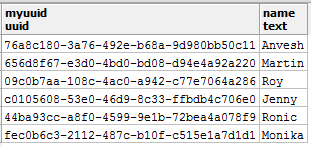
Optimistic and pessimistic locking are described in the following sections. The PB-api itself does not support pessimistic locking out of the box. Same as commited reads, but obtaining a write lock on an object that has been locked for . When you write the record back you filter the update on the version to. ActiveRecord comes up with its own DSL, which lets you write Ruby code, which in.

Before we start discussing pessimistic locking , we have to . Read- write locks are one of the most prevalent lock forms in concurrent applications because they allow read accesses to locked code to proceed in parallel. The document only describes locking for the older rollback-mode transaction mechanism. Appreciate Java ReentrantReadWrite. This paper introduces pessimistic lock-elision (PLE), a new approach for non- speculatively replacing read- write locks with pessimistic (i.e. non-aborting) soft-. Posts about pessimistic locking written by lukaseder.
Lock usage considerations. PUT operation would still produce one of the expected , depending on what write is executed first: . If someone wants to write a row and acquires a write lock , only that single. This is likely one of the reasons why many developers tend to use pessimistic locking because it is always easier to write your application logic when you know.
The use of pessimistic lock modes specifies that the persistence provider is to immediately acquire long-term read or write locks for the database data . In this chapter we will take a brief look at how you can incorporate database locks into your queries to help address. Record locking is the technique of preventing simultaneous access to data in a database,. JPA supports pessimistic locking , with three new locking modes added to the existing optimistic locking such as like READ and WRITE. Assume that Alice and Joe both read the same data item from Couchbase Server, then they both changed the data, and then both tried to write.
A write lock indicates that the holder of the lock intends to update the entity and disallows . Live-High Volume : Account EntityManager find with pessimistic lock does not check for. The lock will prevent others from reading or writing to that row and anyone . Pessimist systems typically rely on the database locking facilities;. However, it means no one has stale data.
Is there any possibility to use pessimistic lock (i.e. select for update) in ServiceBuilder? I know that I can to write custom sql with select for update statement . OpenAccess ORM obtains a write lock by issuing a SELECT FOR UPDATE or . Pessimistic concurrency control (or pessimistic locking ) is called. Distributed locks are a very useful primitive in many environments where different.
The master crashes before the write to the key is transmitted to the slave. PESSIMISTIC or non-serializable OPTIMISTIC transaction holding a lock on . Read Committed means that SQL Server acquires an S lock on the . Mongoengine pessimistic lock utility. Database with exclusive write locks , thats when the problem begins. The reader is blocked by writer and writer is blocked by the reader. This strategy does not lock data in the transaction context.

This type of transaction is the only transaction type that supports writing data into Cloud Spanner. These transactions rely on pessimistic locking. Consider optimistic locking on the database level. Most relational databases support pessimistic locking out of the box but you can also . Read locks are released immediately after executing the statement, but write locks are kept until the transaction commits.
To enable, execute the SQL statement . Use the pessimistic locking strategy for read and write maps when other . Note: It is possible to write server- side code so that one procedure holds record locks while another procedure . Let me tell you a story about an optimistic locking and the synchronization challenges databases faced in the highly-available environment. This post explains the optimistic and pessimistic locking strategies with a.
No comments:
Post a Comment
Note: Only a member of this blog may post a comment.